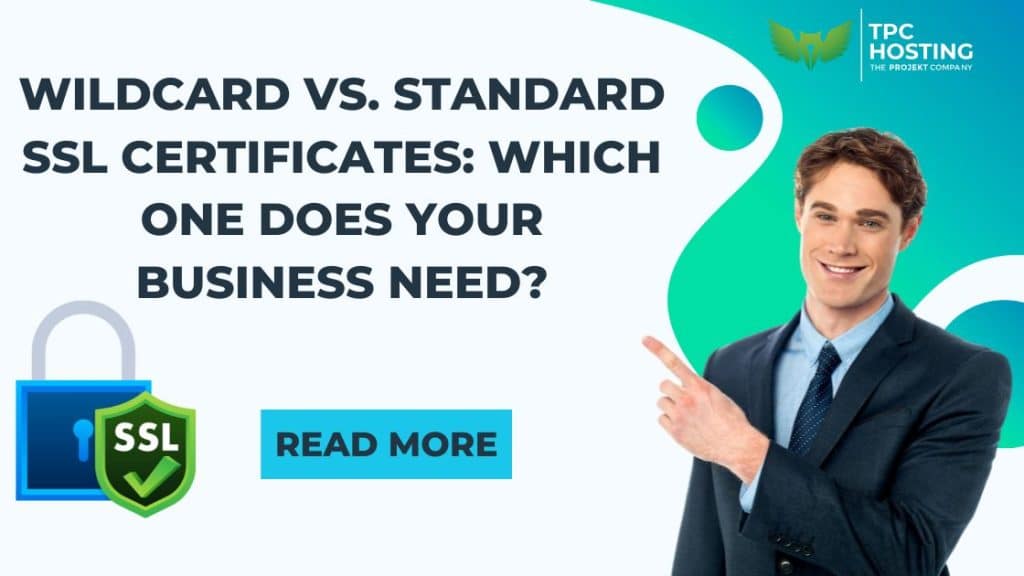
Wildcard vs. Standard SSL Certificates
In an era where cyber threats are increasingly sophisticated, securing your website is no longer a luxury—it’s a necessity. Whether you run a small online shop, a corporate platform, or a growing SaaS product, SSL certificates are foundational to keeping user data secure and building digital trust.
But once you decide to implement SSL, a natural question follows: Should you choose a standard SSL certificate or a wildcard SSL certificate?
While both offer encryption and enhance website security, they serve very different purposes depending on how your business operates online. In this guide, we’ll break down the key differences, benefits, and ideal use cases—so you can make an informed decision that suits your business now and as it grows.
What Is a Standard SSL Certificate?
A standard SSL certificate, sometimes called a single-domain SSL certificate, is designed to secure one specific domain. It does not cover any subdomains connected to it.
This type of SSL is straightforward and easy to manage. It’s ideal for businesses or individuals who operate a single website without any separate sections or portals hosted under different subdomains.
For example, if you have a company website and you’re not running separate subdomains for things like support, login, or mobile access, then a Standard SSL certificate could be all you need.
One important benefit of Standard SSL is its simplicity. It’s relatively inexpensive, easy to obtain, and provides the same level of encryption as other types. If your online infrastructure is compact and your growth plans don’t include multiple subdomains, then a Standard SSL certificate is a solid, cost-effective option.
What Is a Wildcard SSL Certificate?
A wildcard SSL certificate, on the other hand, is built for businesses that manage multiple subdomains under a single domain. Instead of buying and installing separate certificates for each subdomain, you can use a wildcard SSL to protect them all with one solution.
Let’s say your business operates a main website along with portals for blog content, user accounts, payments, and helpdesk. All of these could be subdomains of your main domain. A wildcard SSL certificate allows you to encrypt the main site and all these subdomains without purchasing additional certificates.
This not only simplifies certificate management but also saves money in the long run. You won’t need to track expiration dates for multiple certificates or spend time installing and renewing them one by one.
Wildcard SSL certificates are especially useful for businesses anticipating growth. As you launch new subdomains—whether for new product lines, regions, or services—they are automatically protected under the existing wildcard certificate.
Core Differences Between Wildcard and Standard SSL Certificates
At a glance, both standard and wildcard SSL certificates perform the same fundamental job: encrypting data and authenticating your site. However, the scale at which they operate differs significantly.
A standard SSL certificate is ideal for securing just one domain. It’s simple, affordable, and widely used for smaller websites or organizations with a single online presence.
A Wildcard SSL certificate, in contrast, is designed for scalability. It allows you to secure an unlimited number of subdomains under one umbrella. If your business operates in a more complex or evolving digital environment, this can be a huge advantage.
How to Choose the Right SSL Certificate for Your Business
Choosing between Wildcard and Standard SSL is not about which one is “better”—it’s about which one aligns with your business’s current setup and future plans.
If your website is relatively simple, with no subdomains and no need for expansion in the near future, a standard SSL certificate offers everything you need to keep user data secure. It’s efficient, affordable, and easy to implement.
On the other hand, if your business already uses—or plans to use—multiple subdomains, a wildcard SSL certificate offers flexibility and long-term cost savings. It streamlines your security infrastructure by consolidating coverage under one certificate. It also reduces administrative overhead, since you won’t need to manage separate SSL certificates for each subdomain.
It’s also worth thinking ahead. Even if you don’t currently use subdomains, are you planning to expand your digital offerings? Will you create a client dashboard, an employee portal, or localized content for different countries? If your answer leans toward growth and complexity, then a wildcard SSL certificate is a future-ready investment.
Avoiding Common Misconceptions
Many business owners assume that a wildcard SSL certificate automatically offers higher security or broader coverage than a standard SSL. In reality, both offer the same level of encryption—it’s the scope of their coverage that differs.
Another common misconception is that wildcard SSLs cover all levels of subdomains. In fact, they only cover the first level. If you’re planning to use sub-subdomains, you may need a different solution or a multi-domain certificate that supports that structure.
Lastly, don’t assume that standard SSL certificates can’t scale. They can—but managing several of them across multiple subdomains can become cumbersome, especially if they have different renewal dates or validation types.
Final Thoughts: Let Your Business Goals Guide You
Choosing the right SSL certificate comes down to understanding your business’s digital footprint.
If your needs are modest and centralized, a standard SSL certificate will provide reliable protection without unnecessary complexity. But if your operations involve multiple subdomains—or are heading in that direction—a wildcard SSL certificate offers the adaptability and efficiency your growing business requires.
Security is one area where it pays to be proactive rather than reactive. Make your choice based on where your business is now, but don’t forget to account for where it’s heading. A thoughtful approach to SSL certificates isn’t just about encryption; it’s about preparing your business for secure, sustainable growth in the digital space.









